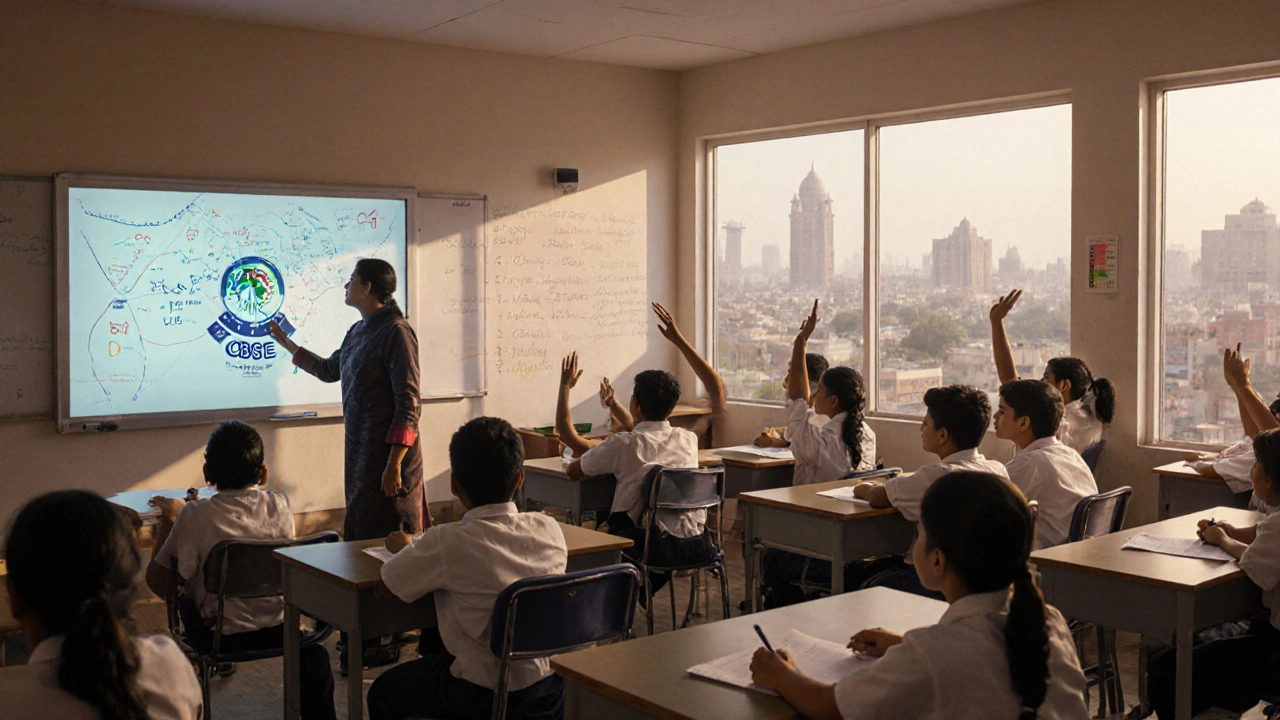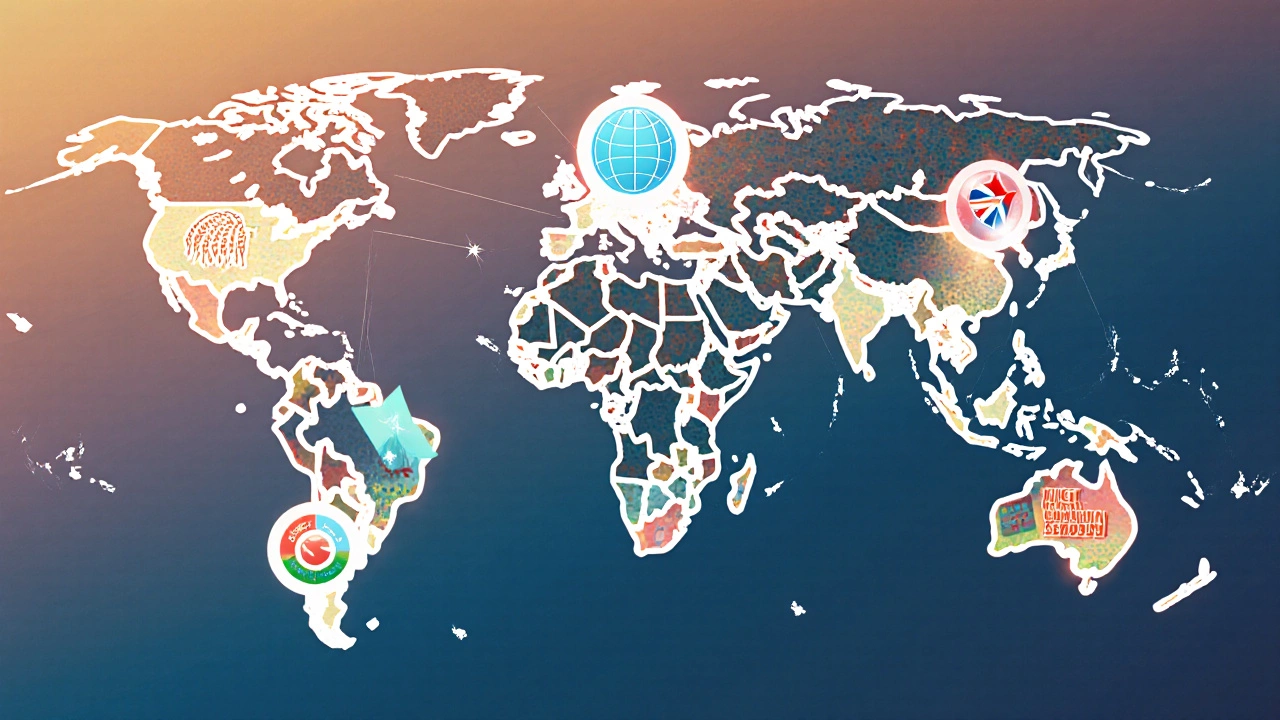Ever wondered which school board dominates the global classroom? With dozens of curricula competing for students' attention, pinpointing the most popular education board isn’t as simple as checking a single website. This guide breaks down the data, compares the heavy‑hitters, and shows why certain boards dominate while others stay niche.
What Is an Education Board?
In the world of schooling, an Education board is a governing body that designs curriculum, sets exam standards, and often awards certificates that universities and employers recognize worldwide. Boards can be national (like India’s CBSE), regional (British GCSEs), or international (International Baccalaureate). Their influence extends from classroom lesson plans to university admissions policies.
How We Measure Popularity
Popularity isn’t just about fame; it’s a mix of concrete metrics:
- Student enrollment - total number of learners registered in a given year.
- Geographic spread - how many countries host schools following the board.
- Exam participation - number of candidates sitting for the board’s public exams.
- Recognition level - acceptance of the board’s certificates by higher‑education institutions worldwide.
We gathered data from UNESCO’s education statistics (2024), the World Bank’s school enrollment reports, and each board’s own annual disclosures.
Top Five Boards by Global Reach (2025)
| Board | Approx. Students Enrolled | Countries Present | Primary Language of Instruction | Recognition Tier |
|---|---|---|---|---|
| CBSE (Central Board of Secondary Education) | ≈ 90 million | India + 30 overseas schools | English, Hindi | High - accepted by Indian universities and many overseas institutions |
| International Baccalaureate (IB) | ≈ 1.9 million | 150+ | English (plus French/Spanish for diploma) | Very High - recognized by top universities worldwide |
| British GCSE / A‑Levels | ≈ 12 million | UK + 50 overseas centers | English | High - gateway to UK and Commonwealth universities |
| American Common Core | ≈ 55 million | USA (50 states) + select international schools | English | Medium - accepted in US colleges, variable abroad |
| State Boards (India) (e.g., Maharashtra, Tamil Nadu) | ≈ 70 million | India (all states) | Regional languages + English | Medium - recognized nationally, limited abroad |
Deep Dive: The Contenders
1. CBSE - The Indian Giant
CBSE was founded in 1962 and now serves roughly 90 million students across India and abroad. Its curriculum emphasizes science, math, and a uniform assessment style, which makes it a favorite for families aiming for engineering and medical entrance exams.
- Strengths: Standardized syllabus, easy transfer between states, strong emphasis on competitive exam preparation.
- Weaknesses: Less focus on humanities and arts, relatively rigid assessment.
2. International Baccalaureate (IB)
Established in 1968, the IB offers three programmes (PYP, MYP, DP) that nurture critical thinking and global citizenship. Though its enrollment is modest compared to CBSE, the IB’s presence in 150+ countries and its reputation among elite universities give it outsized influence.
- Strengths: Inquiry‑based learning, bilingual diploma options, strong university acceptance.
- Weaknesses: High tuition, demanding teacher training, limited reach in low‑income regions.
3. British GCSE / A‑Levels
The British GCSE (for ages 14‑16) and A‑Levels (for ages 16‑18) form the backbone of the UK’s secondary education. They are widely exported to international schools, especially in Africa, the Middle East, and South‑East Asia.
- Strengths: Subject specialization, clear grading, strong acceptance in UK and Commonwealth universities.
- Weaknesses: Limited breadth (students often study only 3‑4 subjects), exam‑heavy.
4. American Common Core
Implemented across the United States in 2010, the Common Core sets math and English language standards for K‑12. While it reaches over 55 million students, its influence outside the U.S. is modest because most foreign schools follow national curricula.
- Strengths: Consistency across states, emphasis on analytical skills.
- Weaknesses: Political push‑back, variable implementation quality.
5. Indian State Boards
India’s 30+ state boards, such as the Maharashtra State Board and Tamil Nadu State Board, together enroll around 70 million students. Their curricula are tailored to regional languages and local employment markets.
- Strengths: Cultural relevance, lower tuition, strong state‑level recognition.
- Weaknesses: Limited transferability, less alignment with nationwide competitive exams.

Why CBSE Leads the Global Pack
When you stack enrollment numbers, geographic spread, and exam participation, CBSE tops the list. Here’s why:
- Massive domestic base - India’s population of 1.44 billion fuels the board’s sheer numbers.
- Exported model - Indian diaspora schools in the Middle East, Africa, and Southeast Asia adopt CBSE for its familiarity and low cost.
- Exam‑oriented design - The board’s focus on standardized testing aligns with India’s competitive‑exam culture, attracting families who want a clear route to engineering, medicine, and civil services.
- Affordability - Public CBSE schools charge minimal fees, making the board accessible to low‑income families, which boosts enrollment.
Even though the International Baccalaureate enjoys higher prestige per student, its total enrollment lags far behind CBSE’s massive user base.
Factors That Can Shift Popularity Over Time
Popularity isn’t static. Several trends could rearrange the ranking in the next decade:
- Digital transformation: Boards that embed online learning platforms (e.g., Cambridge Assessment International Education) may attract tech‑savvy parents.
- Policy changes: If India reforms its board system to integrate more project‑based learning, CBSE could face competition from newer hybrid models.
- Global mobility: As more families relocate, boards with strong international recognition (IB, A‑Levels) may gain users.
- Cost pressures: Rising tuition for IB and A‑Levels could push middle‑class families toward lower‑cost alternatives like CBSE or state boards.
What This Means for Students, Parents, and Educators
Students should ask: Is the board’s curriculum aligned with my career goals? If you aim for engineering in India, CBSE’s focus on maths and physics makes sense. If you target a US Ivy League, the IB’s research essay and Theory of Knowledge may give you an edge.
Parents need to weigh cost versus recognition. While CBSE schools are inexpensive, they may lack the extracurricular depth of IB programmes.
Educators benefit from knowing which board’s pedagogy is in demand. Training for IB’s inquiry‑based methods can open doors at international schools, whereas CBSE expertise is valuable across India’s large public‑school network.

Quick Checklist: Choosing the Right Board
- Define your long‑term education goal (local university, abroad, specific career).
- Compare curriculum breadth vs. depth (e.g., IB breadth, CBSE depth).
- Assess language requirements (English‑only vs. bilingual).
- Consider tuition and ancillary costs.
- Check university recognition in your target country.
Frequently Asked Questions
Which board has the highest student enrollment globally?
The Central Board of Secondary Education (CBSE) tops the list with roughly 90 million students enrolled worldwide as of 2025.
Is the International Baccalaureate more prestigious than CBSE?
Prestige depends on context. IB is highly regarded by elite universities worldwide for its holistic approach, while CBSE is esteemed in India for its strong preparation for engineering and medical entrance exams.
Can I switch from a state board to CBSE after Grade 5?
Yes, most schools allow transfers, but you’ll need to catch up on CBSE’s specific math and science syllabus, which can be intensive.
How does the British A‑Level differ from the Indian 12th‑grade exams?
A‑Levels let students specialize in 3‑4 subjects and are exam‑focused, whereas Indian 12th grade (CBSE/State) covers a broader set of subjects including compulsory language and optional electives.
Will a CBSE diploma be accepted by universities in the United States?
Most US universities recognize CBSE certificates, but applicants often need to provide SAT/ACT scores and meet English proficiency requirements.
Final Thoughts
While several boards boast strong reputations, the data points to CBSE as the clear leader in sheer student numbers and geographic spread. That doesn’t automatically make it the best choice for every learner-curriculum style, future study plans, and budget all matter. Use the checklist above, weigh the pros and cons of each board, and pick the one that aligns with your long‑term vision.

